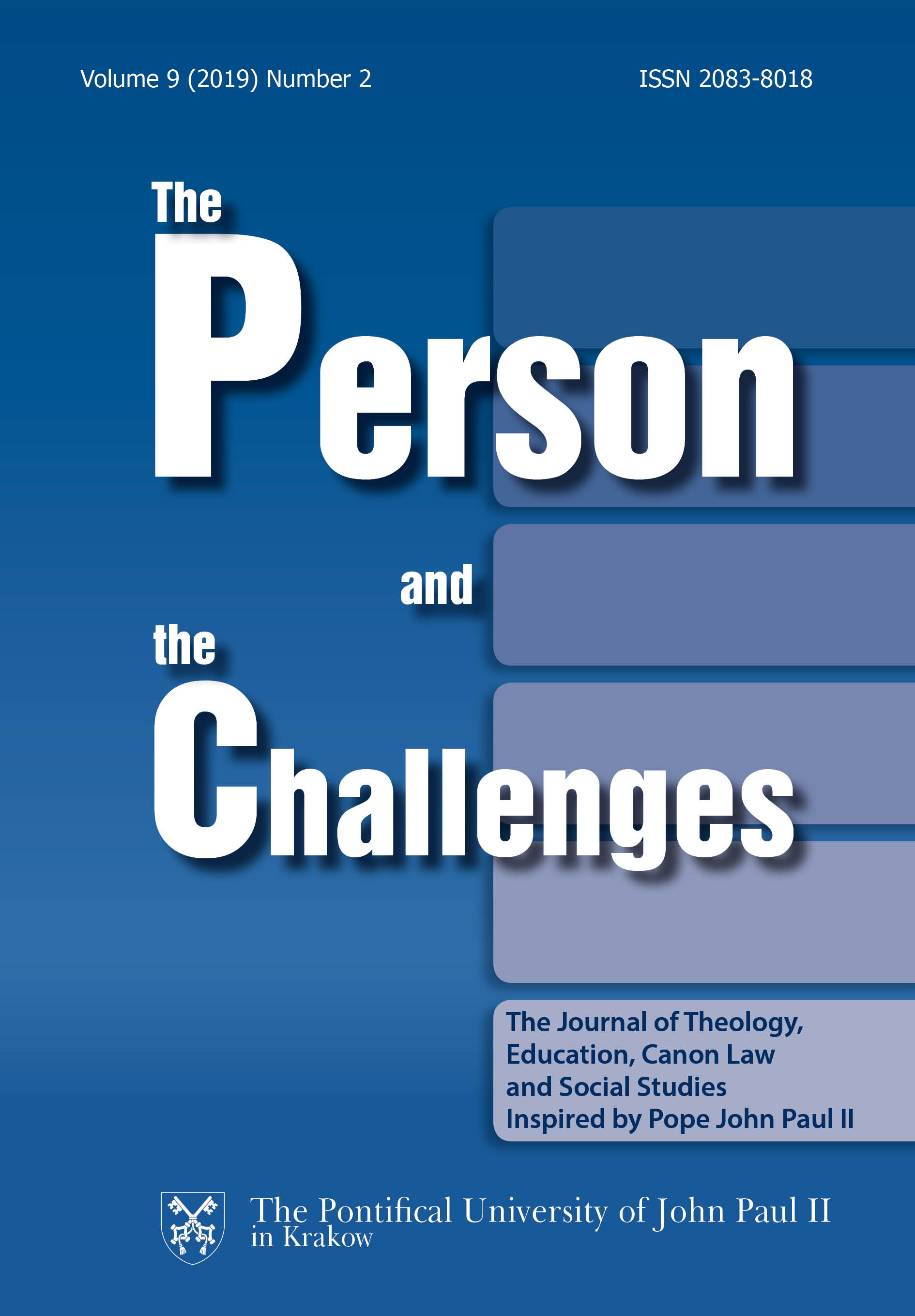Developing Religious Thinking Using C. S. Lewis’s Chronicles of Narnia
DOI:
https://doi.org/10.15633/pch.3459Keywords:
Religious education in schools, children, concept, God, faith, literatureAbstract
The authors present the results of authentic theologizing with children while using the Chronicles of Narnia by C. S. Lewis in the process of religious education. Since the 1950s, when this series of seven fantasy novels for children was published it became recognized as an English classic of children’s literature. Although from the beginning, they have faced praise as well as criticism – particularly due to the recent attempt to use them as a script for a film adaptation – experience with this series of children’s book shows that they can contribute positively to the development of children’s religious thinking. The most important concept for the development of the spirituality of children is their concept of God and what it means to have faith in God.
References
Anderson L. W., Krathwohl D. R., A taxonomy for learning, teaching, and assessing: A revision of Bloom’s Taxonomy of Educational Objectives, New York 2001.
Brádňanská Odrášek N., From Generation Y to Generation Z: Focused on Generation Z, in: Od Generácie Y to Generation Z (From Generation Y to Generation Z), ed. D. Hanesová, Banská Bystrica 2012, pp. 101–124.
Bravená N., Dítě teologem, in: Myšlení o transcedenci, eds. M. Ryšková, M. Mikulicová Mlada, Červený Kostelec 2013, pp. 199–220.
Critcher Ch., Making Waves: Historical Aspects of Public Debates about Children and Mass Media, in: The International Handbook of Children, Media, and Culture, eds. K. Drotner, K., S. Livingstone, Los Angeles & London 2008.
Eco U., The Role of the Reader, Bloomington 1984.
Fowler J. W., Stages of Faith, New York 1981.
Hábl J., Učit (se) příběhem, Brno 2013.
Halama P. et al, Religiozita, spiritualita a osobnosť. (Vybrané kapitoly z psychológie náboženstva), Bratislava 2006.
Hanesová D. et al, Educators in search of the fine line between use and misuse of new technologies, “Communications” 19 (2017) no. 1, pp. 44–48.
Hatoková M., Koncept osobného Boha, in: Religiozita, spiritualita a osobnosť, P. Halama Peter et al (eds.), Bratislava 2006.
Hošek P., C. S. Lewis: mýtus, imaginace a pravda, Praha 2003.
Hošek P., Kouzlo vyprávění (The Magic of Storytelling), Prague 2013.
Kalloch C., Mit Bilder- und Kinderbüchern theologisiern, in: Handbuch Theologisieren mit Kindern, G. Büttner et al. (eds.), Stuttgart 2014, pp. 58–63.
Kraft F., Theologisieren mit Kindern und Kompetenzweb, in: Handbuch Theologisieren mit Kindern, G. Büttner et al. (eds.), Stuttgart 2014, pp. 26–31.
Lewis C. S., The Lion, the Witch and the Wardrobe, Harmondsworth 1950.
Lewis C. S., Prince Caspian, Harmondsworth 1951.
Lewis C. S., Of Other Worlds, London 1994.
MacDonald G., Phantastes, Grand Rapids 1981.
Ricoeur P. Život, pravda, symbol, Praha 1993.
Root J., Guthrie S., The Sacrament of Evangelism, Chicago 2011.
Tozer A. W., The Knowledge of the Holy, New York, 1978.
Tozer A. W., The Divine Conquest, Bromley 1984.
Tozer A. W., The Pursuit of God, Bromley 1984.
Downloads
Published
Issue
Section
License
Copyright (c) 2019 Dana Hanesová, Pavel Hanes, Daniela Masariková

This work is licensed under a Creative Commons Attribution 4.0 International License.
Authors who publish with this journal agree to the following terms:
- Authors retain the copyright and full publishing rights without restrictions, and grant the journal right of first publication with the work simultaneously licensed under a Creative Commons Attribution 4.0 International License that allows others to share the work with an acknowledgement of the work's authorship and initial publication in this journal.
- Authors are able to enter into separate, additional contractual arrangements for the non-exclusive distribution of the journal's published version of the work (e.g., post it to an institutional repository or publish it in a book), with an acknowledgement of its initial publication in this journal.
- Authors are permitted and encouraged to post their work online (e.g., in institutional repositories or on their website) prior to and during the submission process, as it can lead to productive exchanges, as well as earlier and greater citation of published work (See The Effect of Open Access).

